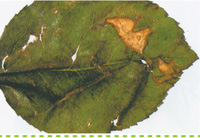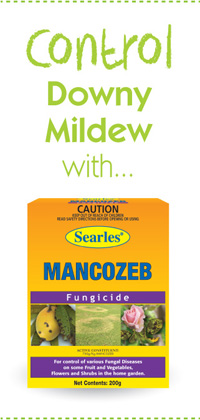What are Downy Mildew symptoms? (Plasmopara viticola)
Downy Mildew is a fungal disease problem that can affect many different plant species yet is mainly found on the foliage of some flowers species such as Roses and Pelargoniums. Plus many productive plants like Grape vines, Cucurbits (zucchini and pumpkin etc) and many members of the brassica family including cabbages and mustard greens.
What does Downy mildew look like?
Downy mildew can be recognised as yellowish to white random markings on the top side of the foliage, while underneath these affected areas are covered in a fine grey film or mould. On Roses and pelargoniums it is often spotted directly on the flower stems and buds as a grey mould.
Downy Mildew can severely damage the foliage of many edible and productive plants as it spreads through the foliage leaving it withered and shrivelled regardless of how well you maybe watering.
This can eventually weaken plants to the point of death.
How to control Downy Mildew
- Maintain soil hygiene by removing all affected foliage and removal of the entire plant.
- Avoid planting follow up crops in that part of the garden that maybe susceptible to downy mildew.
- Avoid watering plants after 2pm (during cooler months) so the plants do not remain moist overnight.
- Allow plenty of good airflow in and around the area and plant downy mildew prone crops in a full sun situation.
Control Downy Mildew by spraying with Searles Mancozeb.

|

